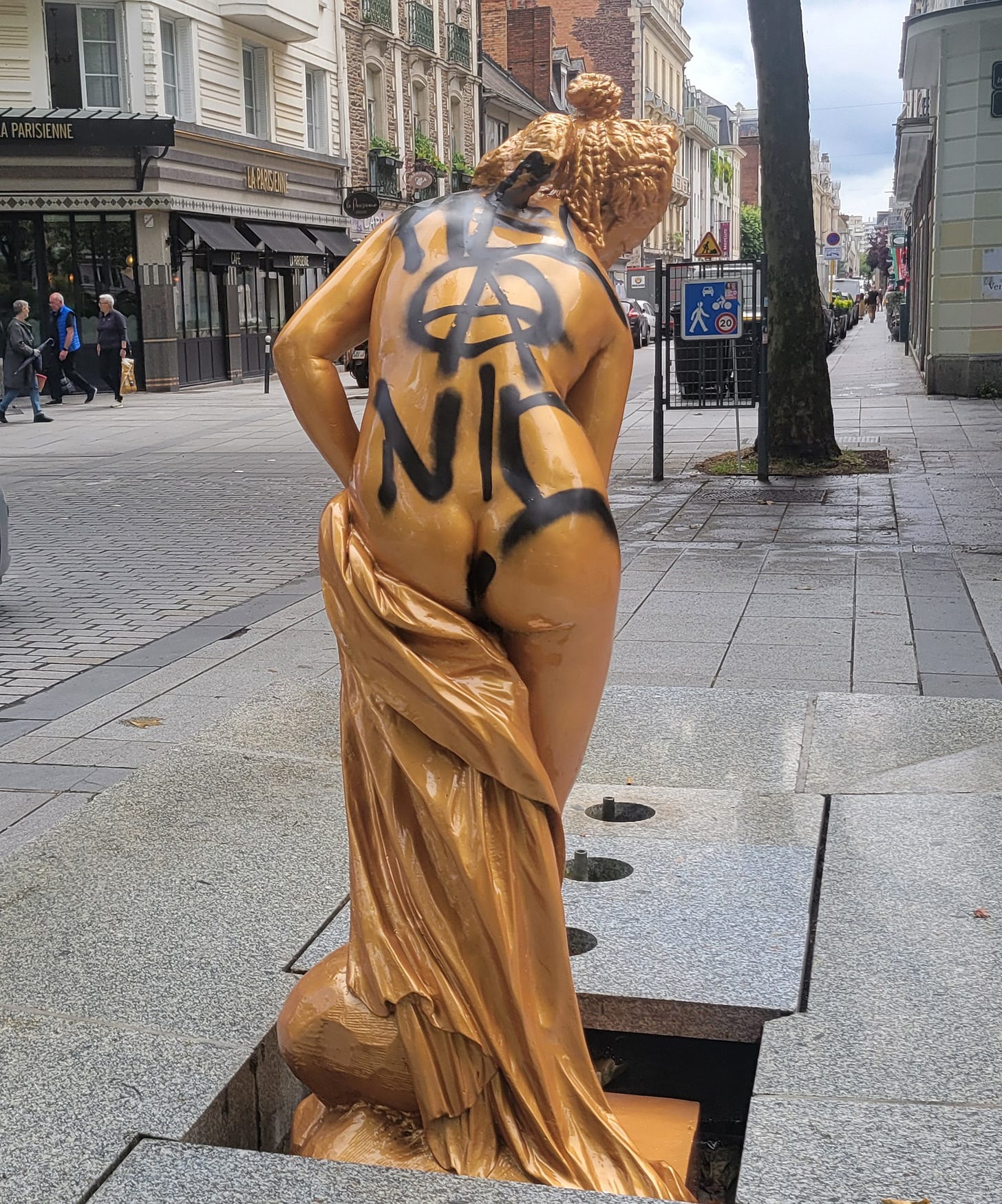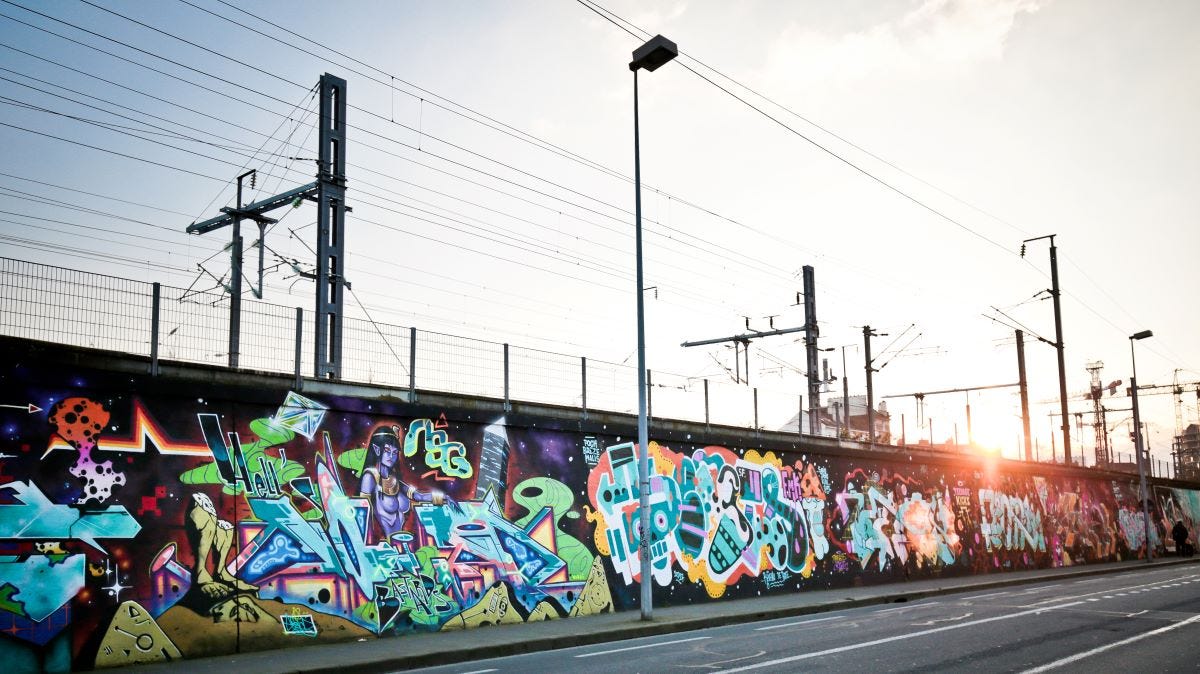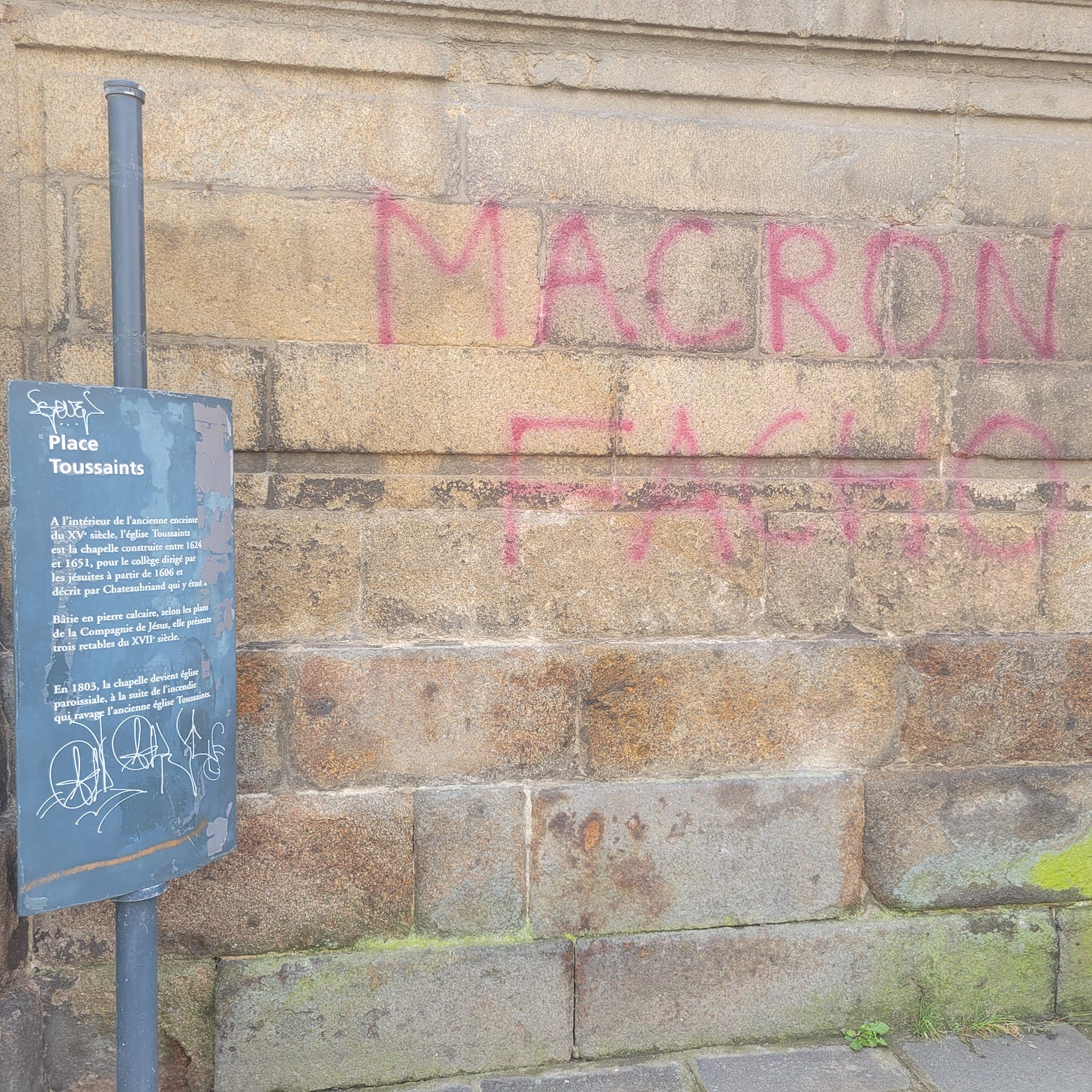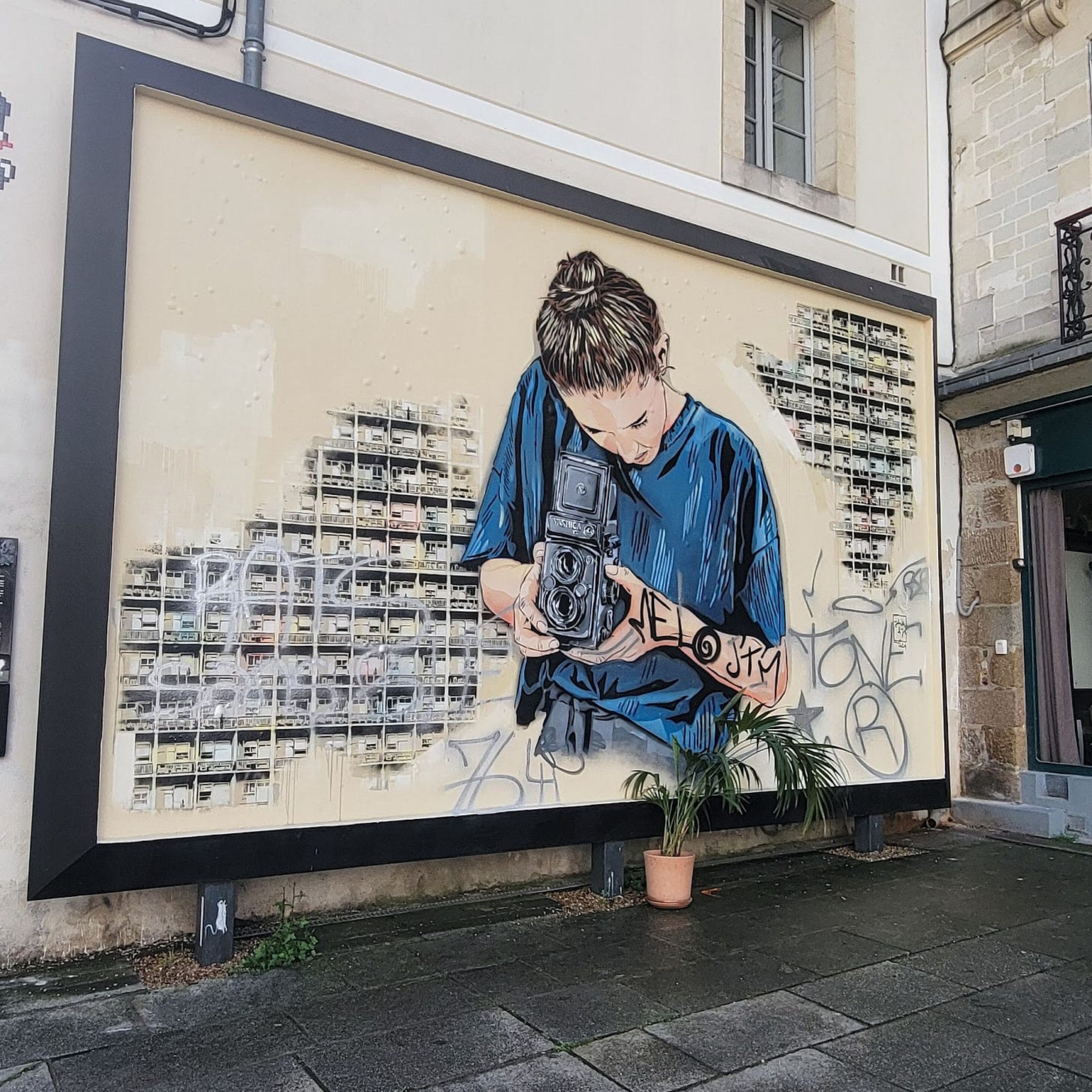Whenever out-of-town guests visit us, we love showing them our town’s famous sights. The half-timbered houses, the grand plazas, the 15th-century gateway to the old city, the canal boats nestled along the quai. All of that pride, though, is overshadowed by an ever-present stain:
Graffiti.
It is impossible to miss. It’s on protected historic landmarks, 2,000-year-old fortifications, sidewalks, trashcans, traffic signs, handrails, Metro stops, modern office buildings, light fixtures, private homes, railroad cars, billboards.
In April, workers removed the four wonderful bronze “Baigneuses pas très académiques” (The Not Very Academic Bathers) sculptures at Place de Bretagne for a scheduled cleaning. It’s a job the city reportedly tackles every eight years, so they can be repainted in blue, gold, bronze and green.
Someone showed up with a can of spray paint (known in French as la bombe aérosol) in under a week.

Over the years, we’ve visited hundreds of big cities and small towns in North America and Europe. New York, Paris, Philly – they probably rank 1, 2, 3 in graffiti because of their size. But square foot to square foot, I’d match Rennes against any of them.
Which is why I found myself earlier this week shelling out 4 € for “Aérosol: Une Histoire du Graffiti.” The exhibition was staged at Le Musée des Beaux-Arts de Rennes, a 175-year-old neoclassical gem whose grand stone exterior, I will note with unsurprising irony, is frequently defaced with spray paint.
I stepped inside, hoping to gain some insight into the unsightly plague. I left scratching my head, wondering about the line between vandalism and art.
And, yes, Art with a capital A is a key component of any discussion about graffiti, or as its proponents like to call it, “street art.” The exhibit makes little distinction between stylized tags repeated a hundred times along a string of construction site barricades and authorized wall murals. This is a world, after all, where works by Keith Haring and Banksy are auctioned by Sotheby’s for seven figures.
There are no Banksies in Rennes, but we do have WAR, an anonymous artist known for covering walls with animals, flowers and other bits of nature. (We pass this one nearly every day.)
Like Philadelphia with its world-famous Mural Arts program, Rennes embraces and promotes street art as part of its local character. The tourist bureau leads monthly walking tours of street art, a city-run arts organization provides financial grants and legal wallspace for budding artists, and another one – supported by the French Ministry of Culture, among others – sponsors exhibitions for youngsters.

But where Mural Arts was born as an anti-graffiti initiative, the arts agencies here do not necessarily discriminate against the mindless scrawling that trashes up so much of this city. To their leaders, the “vitality” of urban art is part of Brittany’s “rich heritage.” That lenient attitude promotes a culture that legitimizes what would otherwise be deemed as criminal behavior in other cities. It’s an attitude that turns a blind eye to the local art supply store that stocks open shelves of MTN Hardcore, advertised as “the very first spray paint in the world to be designed specifically for the practice of Graffiti Art.” Try that in Chicago, where the sale and possession of spray paint is outlawed.
The museum exhibit goes to great lengths to champion the role of graffiti in bringing modern culture – from political protest to punk rock – to the public space. In the age of corporate-controlled media, I can certainly appreciate the desire for weaker voices to be heard.
So, as I examined dozens of works (including, weirdly, a fully spray-painted miniature Paris subway car), I found myself checking my geezer privilege. Yes, I was pissed the day I saw that the facade of our apartment building had been splattered with blue stick figures. But how many times had I been encouraged in my youth by antiwar slogans plastered on office buildings or “Bird Lives” on a bridge abutment? I still think of Cornbread as a folk hero, not a criminal.
It’s just that, in moving here, I so want Rennes to be the paradise of my French dreams, where everyone – especially the young political malcontents who spray every damn wall in sight during our city’s frequent protests – treats the city with the respect I think it deserves. I marvel at its history, its priceless beauty; why are they defiling it with 4.50 € aerosol cans of Party Yellow?
Of course, there is no such thing as praline perfection where people live. We bump into each other and shred the gauze with hard edges.
You see it in the tone of political messages written as broadsides against President Macron. He is called all manner of names in scripts that decry his imperious order to raise the national retirement age to 64. If I tell myself I should empathize with the protesting workers who spray-painted the facade of the 17th-century Église Toussaints, will I say Ban les Bombes when those cries are replaced by slogans in support of the Holocaust-denying fascist Marine Le Pen?

The same questions linger as I consider the artistic value of it all.
The 10-story mural that graffiti artist Héol painted across town sure seems like art. But this example at Rennes 2 University is garbage, n’est pas?.
Maybe this is a case of “the eye of the beholder,” where one man’s defacement is another’s Picasso. But, in the name of public good, shouldn’t there be some boundary line? And if there was, would it still be art? Not if Alito has anything to do with it.
I left the museum with my questions unanswered, and wandered to Rue Vasselot, a pedestrian shopping street. This was the neighborhood where Theresa and I found temporary digs when we first visited Rennes two years ago.
The small street is home to Le M.U.R. de Rennes, a rotating mural that we regularly visit because it’s just a block from the best baguette in town. The artwork is a key feature of a vibrant street scene that drew us here in the first place. Maybe I would find inspiration there, some sense beneath all of this mindless graffiti.
I gazed upon this month’s work by a pair of Bavarian-based street artists. It’s a striking piece that merges their photography with a stenciled rendition of a woman focusing her camera toward the streetscape.
Damned if it wasn’t tagged.






Very nice piece. I was just thinking about where graffiti ends and street art begins...
PS--love WAR's "Yellowjacket bee"!